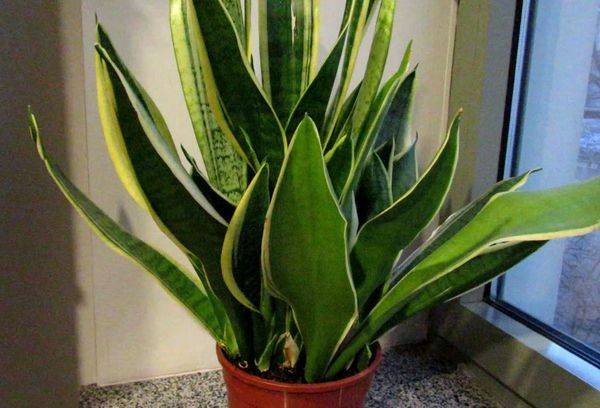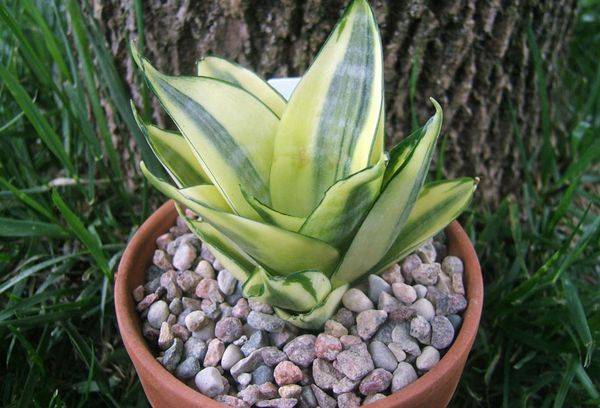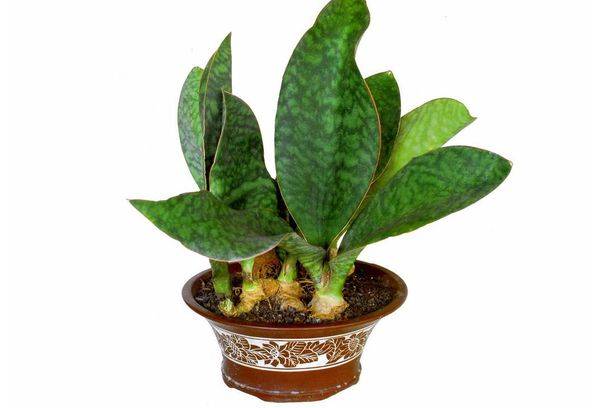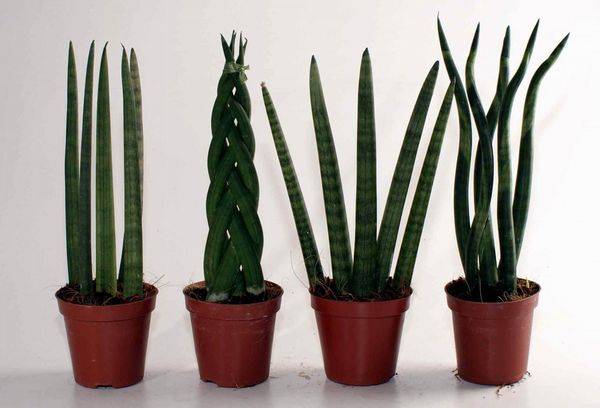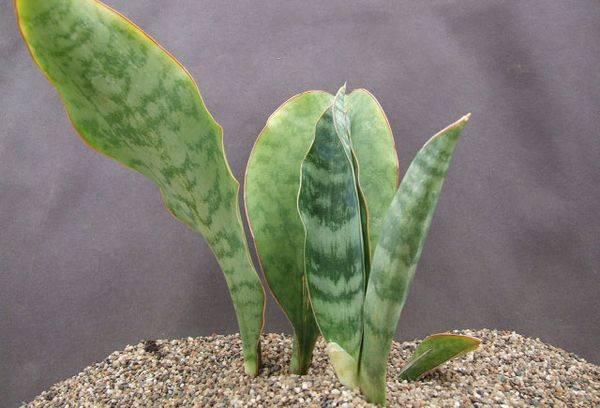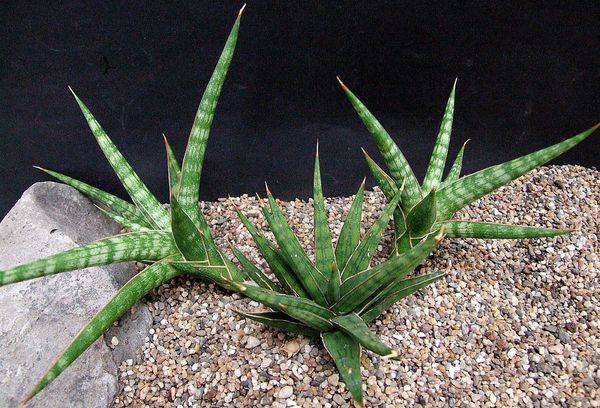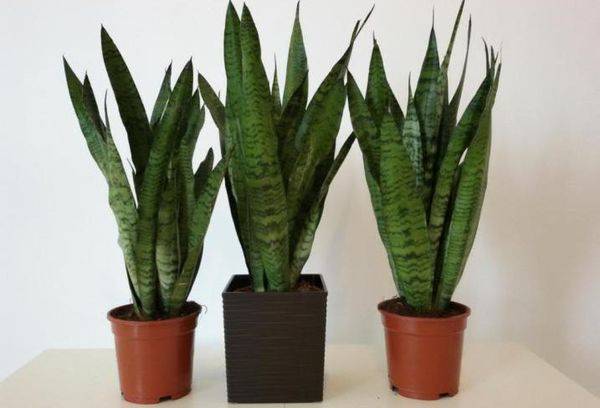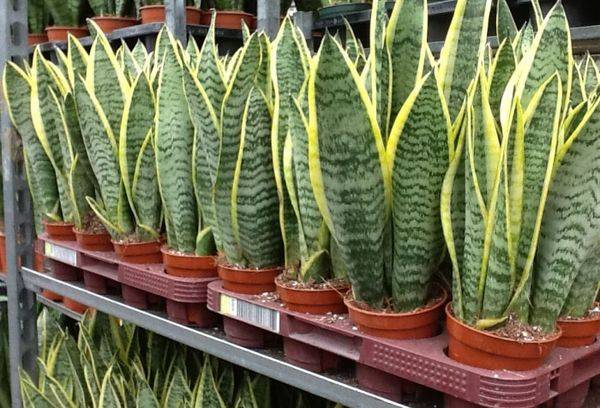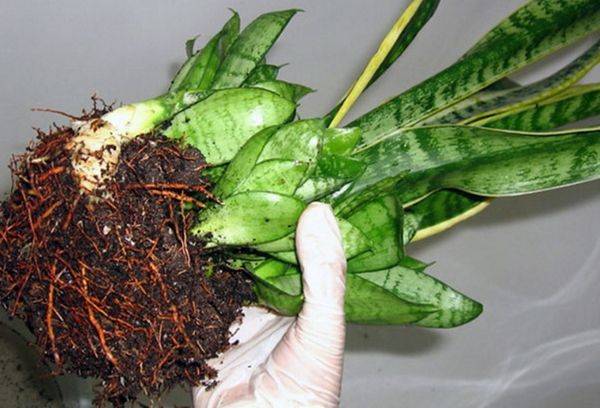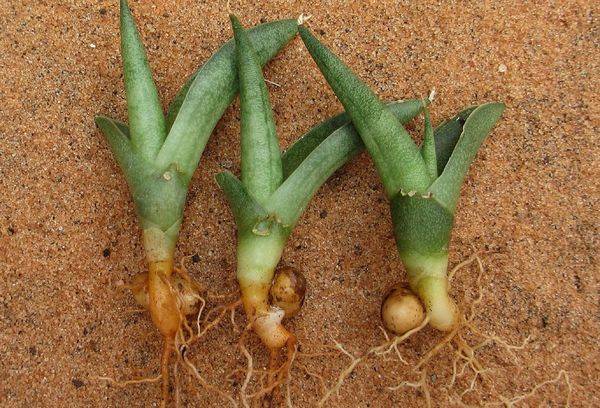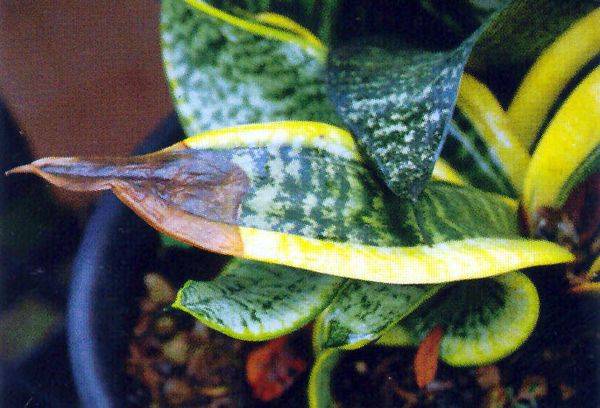Mother-in-law's tongue, or Sansevieria - a convenient flower for beginner gardeners
Content:
Which indoor plant to choose in order to get excellent results at minimal cost? Caring for sansevieria is not a hassle; this flower is unpretentious, but has high decorative value. The long, fleshy leaves of the beautiful Sansevieria not only decorate the room, but also benefit the owner of the plant. The flower purifies the air in the room and has a beneficial effect on the human condition.
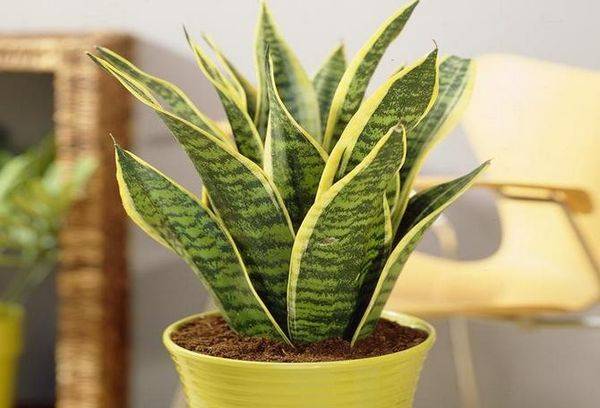
Description
Sansevieria (from Latin Sansevieria) is a genus from the asparagus family, which includes about 60 species. These evergreen stemless plants grow in savannas, deserts and semi-deserts of Asia and Africa. It is popular among flower growers around the world and evokes many associations, which is why it has been given various poetic names:
- pike tail,
- leopard lily,
- mother-in-law's tongue,
- cuckoo tail,
- indian sword,
- Snake skin,
- African hemp,
- devil's tongue
- There are variants of the Latin name: sanseviera, sansevieria, sanseviera.
Mother-in-law's tongue is suitable for landscaping both apartments and offices. The main decorative value of sansevieria is its leaves. They have a lanceolate shape and extend upward from a powerful root. The pointed leaves can reach a height of 1 m, in some varieties - higher. The color of the leaves is dark green or brown; varieties with yellow and silver leaves have been bred.Depending on the variety, there may be decorations - edging, transverse or vertical stripes.
In early spring, Sansevieria begins to bloom. It lasts on average 2 weeks. The flower produces a spike-shaped arrow on which small white flowers are located. An interesting feature: the buds open late in the evening and last all night. At this time, a subtle and delicate aroma reminiscent of vanilla is felt. The fruit of the plant is a berry with a small number of seeds, but at home it rarely sets.
Varieties
There are many species common in home floriculture. The activities of breeders have made it possible to develop varieties of different sizes, shapes and shades. All of them are easy to care for and even have amazing resilience.
The most famous varieties of Sansevieria:
- Three-banded (Sansevieria trifasciata) - a combination of decorativeness and minimal maintenance requirements. That is why the variety turned out to be one of the most common. This plant has a powerful rhizome and erect leaves of light green color, covered with transverse dark stripes. Three-strip sansevieria blooms twice a year - in autumn and spring. Fits well into any interior and becomes an excellent basis for flower arrangements.
- Sansevieria grandis - African perennial. The rosette consists of 2-4 dense leaves of a light green hue. The leaf measures from 30 to 60 cm in height, and up to 15 cm in width. Each leaf is decorated with dark green transverse stripes and a red edging.
- Sansevieria cylindrica - the owner of dark green cylindrical leaves with a diameter of 1-2 cm. A deep groove runs along the length of the entire leaf. An adult plant can reach 1.2-1.5 m in height.Thanks to its unusual shape, this species became the basis for breeding work, which resulted in the appearance of many interesting varieties (leaves that can be braided and others).
- Sansevieria hyacinthoides - a plant up to half a meter high, the leaves are arranged in bunches of 2-4 pieces. Color - dark green, decoration - reddish or white edges, light green broken stripes.
- Sansevieria graceful, or graceful (Sansevieria gracilis) - oval leathery leaves of a gray-green hue with transverse stripes of beige color.
Care
Some gardeners jokingly call Sansevieria indestructible: you can forget about it for a couple of weeks, but it will not dry out, and it is easy to revive it. The plant has high vitality due to its growth in deserts and savannas. Sansevieria is a succulent: in its fleshy leaves it accumulates moisture in case of long-term drought. But don’t think that it’s enough to put a flower pot on the windowsill and forget about it.
Minimal care will still be required:
- First of all, the location. Sansevieria is light-loving, so the best place would be a windowsill. If there is no place near the window frame, the cuckoo's tail will not be upset at all and will take root perfectly in any other place in the apartment.
- The plant tolerates shade well. If there is very little light in the room, the most that can happen to the flower is a slight loss of decorativeness.
- Temperature for growing leopard lily does not play a big role. She is comfortable in both heat and cold. To preserve decorativeness, the magazine purity-en.htgetrid.com advises not to allow the indoor temperature to drop below +16 degrees in winter.
- Sansevieria practically does not need fertilizer. One feeding per year is enough for her.In spring and summer, the flower will not refuse a monthly portion of liquid fertilizer for cacti. In this case, the concentration is reduced by two to three times, since excess nitrogen has a bad effect on the plant, especially on varieties with colored stripes. They may lose their decorative effect and become monochromatic.
Advice
Choose an eastern or western window for sansevieria, as direct sunlight is highly likely to burn the leaves, or arrange a little shading.
Humidity and watering
The main task of the gardener is to ensure proper watering. The worst thing for sansevieria is waterlogging of the soil. If you fill the soil, the root system will quickly begin to rot. Important
An error in the amount of moisture can destroy an invincible plant. Buy a humidity indicator from your local florist. This device will remind you when it's time to water the flower.
The water should be soft. It is better to use distilled, rain or settled water. Water temperature is room temperature. Water the plant moderately but regularly. The lower the room temperature, the less often you need to add water. In winter, 1-2 waterings per month are sufficient.
Do not allow water to get into the rosette of leaves: this will most likely provoke diseases. To preserve its decorative appearance, it is completely permissible to wash sansevieria from time to time. Dust from the leaves is removed with a wet sponge or damp cloth. Light spraying is allowed occasionally. Air humidity doesn't matter.
Transfer
Relocating sansevieria is the second most important point in caring for a flower. The procedure is performed in early spring. The roots have time to grow in 3-4 years, so changing the pot does not happen more often. Young plants can be moved once every 2 years.If you do not replant a flower when its roots are mixed with the ground, it will stop developing. A sign that it's time to pick up a new flowerpot: roots are sticking out of the drainage hole.
The size of the pot should not be much larger than the size of the previous container. This is important for the flowering of the pike tail: it occurs when the roots entwine the earthen ball. Buy special soil for planting. Store-bought mixtures include gravel and perlite.
How to prepare soil for a plant yourself:
- turf soil - 2 parts;
- leaf - 1 part;
- humus - 1 part;
- peat - 1 part;
- sand - 1 part.
It is better to take a clay container with thick walls, otherwise the flower will destroy it: the powerful root system can tear apart a fragile pot, and the heavy and long fleshy leaves will easily overturn the flowerpot if they are touched. This is why the strength of the container is so important. Its shape should be wide rather than deep. At the bottom it is necessary to lay a small layer of drainage made of shards or expanded clay.
Reproduction
Sansevieria is planted at home in two ways:
- By dividing the rhizome. It is most convenient to separate parts of the plant during transplantation. The rhizome is cut with a sharp knife. There should be a growth point on each part. Divided sansevieria are planted in different pots, watered moderately, and stored in a warm place. The method is equally suitable for all varieties.
- Dividing the sheet. An old leaf is taken, cut into pieces of 4-5 cm and dried in air. The lower end of the sheet (it should be noted when dividing) is immersed in sand at a slight angle and covered with a jar. Watering is done through a tray. A piece of leaf takes root within 30-40 days. After rooting, the young plant is transplanted into the ground.This method is only suitable for varieties with monochromatic leaves: variegated leaves produce monochromatic children.
Growing difficulties
Sansevieria has enviable vitality, but troubles also happen to it:
- The leaves turn yellow and soften at the base. This is caused either by the substrate being waterlogged or by water getting into the outlet. It is necessary to remove the damaged parts and replant the plant. In advanced cases - root rotting - only the healthy part (for example, a leaf) takes root.
- The leaves become limp and rot, but the soil is dry. A possible reason is that the room temperature is too low. As in the previous case, only healthy parts of the flower are left and replanted.
- Dark brown spots on the leaves are a sign of increased soil moisture. Perhaps there is not enough light.
- Brown spots with yellow edges are a fungal infection. Treat with a fungicide and remove the affected parts.
- Sansevieria pests - spider mites, scale insects. Control method: insecticides, transplanting into healthy soil.
Benefits and harms
Pike tail is a medicinal plant. In traditional medicine, it is used to make anti-inflammatory, choleretic, laxative and expectorant drugs. In folk medicine, the benefits of plant parts are noted for otitis media, inflammation of the oral cavity, skin lesions and cystitis. The juice of the plant must be used with great care, since the substances are beneficial only with certain processing. It is better to entrust the preparation of the drug to a professional.
Not all varieties are safe. Thus, Sansevieria three-lane contains toxic substances that cause nausea, vomiting and diarrhea. Getting the sap on your skin is safe, but eating parts of the plant is dangerous.Restrict access to sansevieria to children and pets.
Indoor Sansevieria is recommended for growing for people prone to anxiety. In China, they believe that the flower absorbs negative energy and helps restore harmony to the home. The plant disinfects the room and helps the body resist viral diseases. The flower purifies the air from harmful substances and neutralizes dangerous radiation.
Sansevieria is a convenient option for a beginning gardener. The plant is grateful for care, but will survive its absence. A minimum of actions - and not only a highly decorative flower grows on your windowsill, but also a useful medicinal plant.
